-

 Jim Hegarty The Hegartys of the Laurels tells the story of how a family home played a crucial role in Ireland’s independence struggle in Cork. The Laurels was a tranquil homestead and the centre of a thriving market gardening business. With the outbreak of the War of Independence however, the Hegarty homestead was transformed into a nucleus of subversive activity; a safe house, landmine factory, arms and ammunition dump, the No 1 Brigade’s base, and a base for Cumann na mBan’s intelligence gathering.
Jim Hegarty The Hegartys of the Laurels tells the story of how a family home played a crucial role in Ireland’s independence struggle in Cork. The Laurels was a tranquil homestead and the centre of a thriving market gardening business. With the outbreak of the War of Independence however, the Hegarty homestead was transformed into a nucleus of subversive activity; a safe house, landmine factory, arms and ammunition dump, the No 1 Brigade’s base, and a base for Cumann na mBan’s intelligence gathering. -
Out of stock
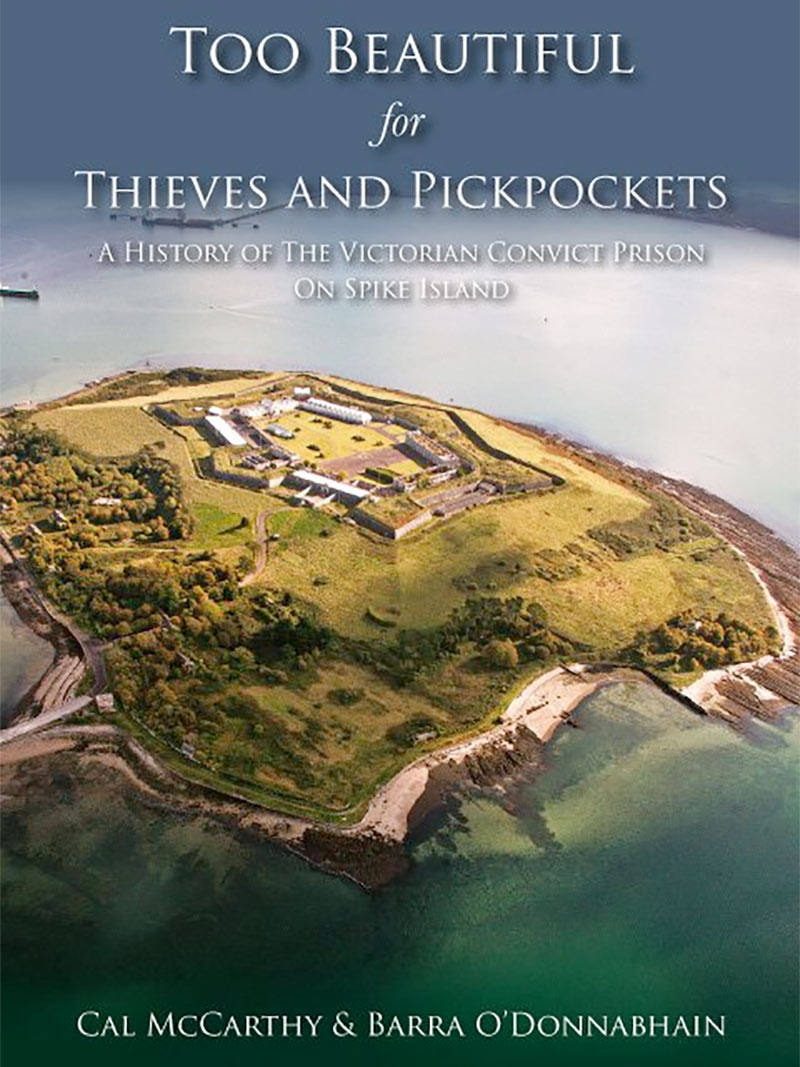 Cal McCarthy, Barra O'Donnabhain A History of the Victorian Convict Prison on Spike Island. A comprehensive overview of the lives and times of the notorious Spike Island convict prison.
Cal McCarthy, Barra O'Donnabhain A History of the Victorian Convict Prison on Spike Island. A comprehensive overview of the lives and times of the notorious Spike Island convict prison. -
Out of stock
 John Jeffries The Cobh Pier Head Shooting and the story of the moon car. On 21st March 1924 a group of men wearing Irish army uniforms pulled up at the main pier in Cobh, Co. Cork. Seated in a yellow Rolls Royce Silver Ghost, they watched around 50 British soldiers disembark from a ferry from Spike Island. Suddenly the men in the Rolls Royce produced machine guns and fired on the British soldiers. One soldier was killed while eighteen others and six civilians were injured. Driving away at speed, the Rolls Royce stopped briefly to fire on a British warship in the harbour. An hour later armed British soldiers returned to Cobh and more shots were fired. There followed one of the biggest manhunts in modern Irish history, making front-page news throughout the world. The Rolls Royce and its occupants seemed to have vanished into thin air. The car was not seen again for 57 years. In his book Death on the Pier, John Jefferies unravels fact from myth surrounding the Pier Head shooting and the amazing story behind the mysteries Rolls Royce known as the Moon Car.
John Jeffries The Cobh Pier Head Shooting and the story of the moon car. On 21st March 1924 a group of men wearing Irish army uniforms pulled up at the main pier in Cobh, Co. Cork. Seated in a yellow Rolls Royce Silver Ghost, they watched around 50 British soldiers disembark from a ferry from Spike Island. Suddenly the men in the Rolls Royce produced machine guns and fired on the British soldiers. One soldier was killed while eighteen others and six civilians were injured. Driving away at speed, the Rolls Royce stopped briefly to fire on a British warship in the harbour. An hour later armed British soldiers returned to Cobh and more shots were fired. There followed one of the biggest manhunts in modern Irish history, making front-page news throughout the world. The Rolls Royce and its occupants seemed to have vanished into thin air. The car was not seen again for 57 years. In his book Death on the Pier, John Jefferies unravels fact from myth surrounding the Pier Head shooting and the amazing story behind the mysteries Rolls Royce known as the Moon Car. -
Sale!

 Pat Holland For over forty years volunteer mountain rescue teams have been on standby twenty-four hours a day, every day of the year ready to help those in trouble on the hills and mountains of the island of Ireland. This book describes how the teams and the search dog association have developed from very modest beginnings to become experienced and capable frontline 999/112 services.
Pat Holland For over forty years volunteer mountain rescue teams have been on standby twenty-four hours a day, every day of the year ready to help those in trouble on the hills and mountains of the island of Ireland. This book describes how the teams and the search dog association have developed from very modest beginnings to become experienced and capable frontline 999/112 services. -


Owen Corrigan
This book traces the history of pharmacy in Ireland from the earliest times to the end of the twentieth century. It is primarily for pharmacists/pharmaceutical chemists and all those with an interest in the history of the health professions in Ireland. The author, Owen I. Corrigan FTCD is a pharmacy educator and pharmaceutical scientist and was Professor of Pharmaceutics in Trinity College Dublin. -
Sale!
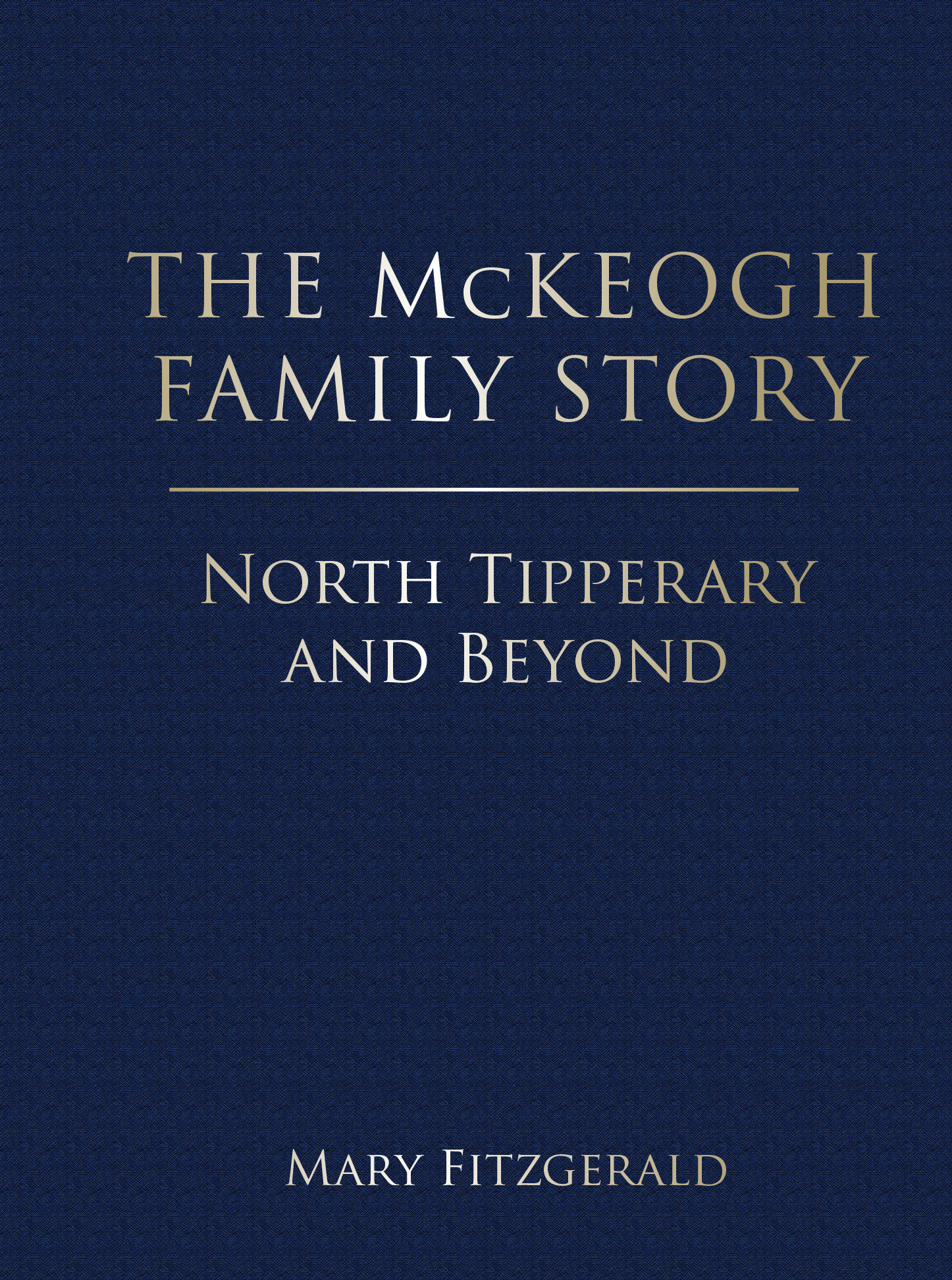 Mary Fitzgerald The McKeogh Family Story traces the descendants of the McKeogh men who were living in the parishes of Ballina / Boher, Ballinahinch / Killoscully, and Newport / Birdhill when the 1666/1665 and 1666/1667 Hearth Money Rolls were compiled. It includes a brief history of their ancestors and covers the lives of a family of farmers, merchants, labourers, craftsmen/women, teachers, priests, nuns, and doctors from the mid-1600s until the early 1900s. This Hardback B5 Volume of 485 pages is divided into seven parts, with subdivisions to help the reader find their place on the genealogical tree. Part 7 consists of blank pages to facilitate a link between the past and the present.
Mary Fitzgerald The McKeogh Family Story traces the descendants of the McKeogh men who were living in the parishes of Ballina / Boher, Ballinahinch / Killoscully, and Newport / Birdhill when the 1666/1665 and 1666/1667 Hearth Money Rolls were compiled. It includes a brief history of their ancestors and covers the lives of a family of farmers, merchants, labourers, craftsmen/women, teachers, priests, nuns, and doctors from the mid-1600s until the early 1900s. This Hardback B5 Volume of 485 pages is divided into seven parts, with subdivisions to help the reader find their place on the genealogical tree. Part 7 consists of blank pages to facilitate a link between the past and the present. -

 Helen Kelly, Eamonn McHale and Jimmy Stephenson Heuston’s Fort is a book that highlights the importance of the battle of the Mendicity Institution Garrison to the 1916 Easter Rebellion in Ireland. The Small contingent of 29 men made a significant contribution in prolonging the rebellion by preventing large numbers of troops from attacking the central command at the General Post Office and other larger garrisons such as the Four Courts and Dublin Castle. Authors: Helen Kelly, Eamonn McHale and Jimmy Stephenson Illustrator: Jimmy Wren
Helen Kelly, Eamonn McHale and Jimmy Stephenson Heuston’s Fort is a book that highlights the importance of the battle of the Mendicity Institution Garrison to the 1916 Easter Rebellion in Ireland. The Small contingent of 29 men made a significant contribution in prolonging the rebellion by preventing large numbers of troops from attacking the central command at the General Post Office and other larger garrisons such as the Four Courts and Dublin Castle. Authors: Helen Kelly, Eamonn McHale and Jimmy Stephenson Illustrator: Jimmy Wren -
Out of stock
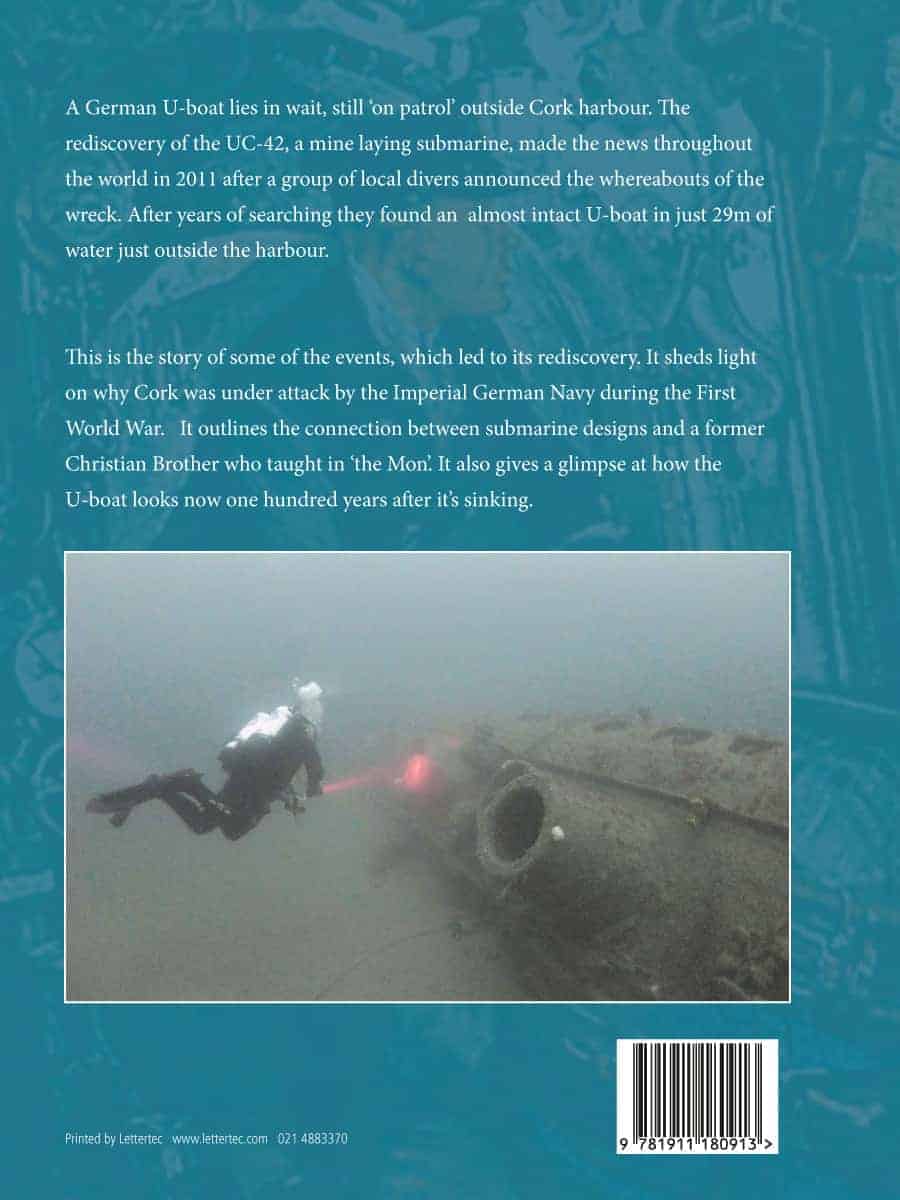
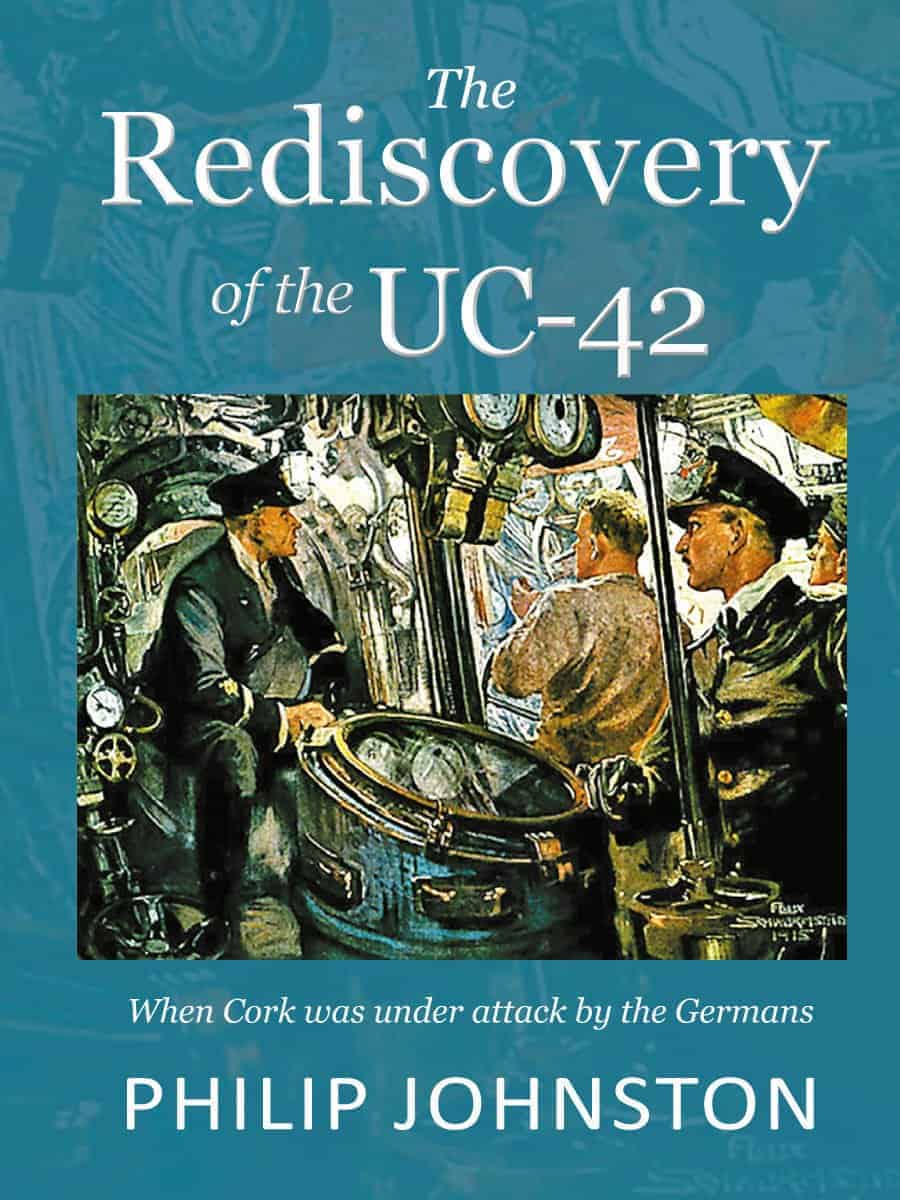 Philip Johnston When Cork was under attack by the Germans.
Philip Johnston When Cork was under attack by the Germans. -
Out of stock
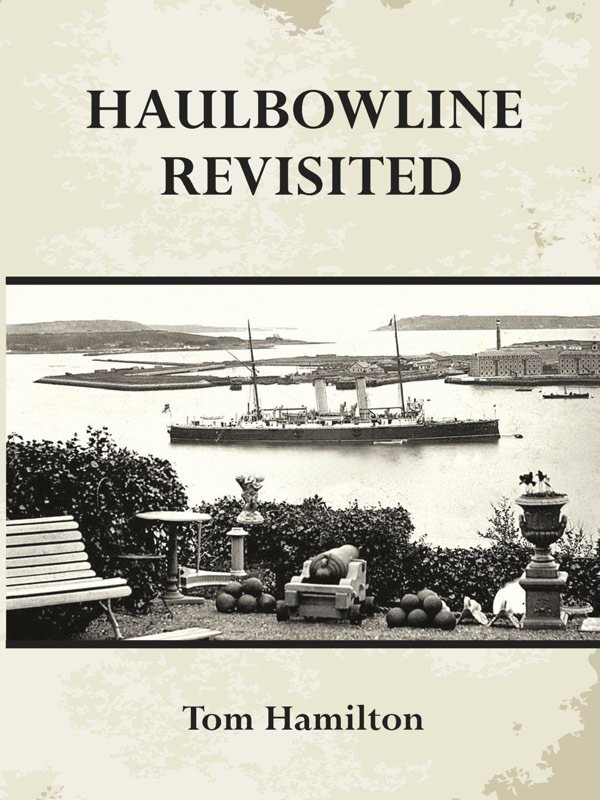 Tom Hamilton
Tom HamiltonHaving discovered that a foundation stone for the Naval Dockyard had actually existed, my quest was now to try to find the elusive stone. To do this meant rolling back the years, back to the 1800’s to an island of rocks and foxes. What I discovered during my months of searching and research was truly amazing as information accumulated. I pieced together the history of an island reborn from sheer stone rock and reclaimed land. The island which lay dormant for centuries now began to grow and a great victualling yard, dockyard and drydock emerged, encompassing an area of over 15 acres…
-
 Wining, dining and dancing in Dún Laoghaire through the ages.
Wining, dining and dancing in Dún Laoghaire through the ages.Eileen O’Duffy
Champagne, Cocktails and Crêpes Suzette is a journey back to a golden era where local residents and visitors wined, dined and danced in Dún Laoghaire town and along the waterfront. The book is a limited edition, stylish, luxurious, coffee table book. It is A4 landscape size with a laminated hard cover, 160 pages printed on 150gsm silk paper, with lots of beautiful photographs, many in full colour. -


Seamus McNally
Ireland lost millions of people to a devastating famine in the late 1840’s. How did a small country rise off its knees, within seventy years, to win a war against the might of the British Empire? This is the question that inspired Séamus McNally to learn more about the real events and lives that shaped this time in history. From meticulous research and drawing on his insight as a local, the author of The Heart of the West: A Journey of Hope after the Famine brings new life to nearly forgotten Irish stories from a neglected corner of the country. This work of fiction, based closely on true events, follows the ordinary lives of diverse families (1850’s to 1950’s) , from the local peasants to the privileged occupier, and the ties that bind them. Séamus McNally is a native of Louisburgh, and grew to manhood between the hills and seas of the Wild Atlantic Way. He had a couple of his plays produced and is a performance poet of his humorous verse. He has a keen interest in local history. When his great grandmother died in 1956, at the grand age of 108, she was the last survivor of the Gorta Mór (Great Famine). -


Dublin and Monaghan Car Bombings 1974 by John A. O’Brien
John O’Brien is a retired Detective Chief Superintendent, formerly head of the International Liaison Protection section in Garda HQ. National Head of Interpol and Europol. Previously Divisional Chief Superintendent in Louth/Meath and Laois/Offaly Divisions. A former superintendent, detective inspector, uniform inspector, and sergeant. He enjoyed a rewarding career as a front line garda. He is the holder of a MSc in Public Order Studies. John is also deeply involved in the Oral History project which is promoted by the GSRMA (Garda Retired Association) on gardahistory.com. He is the author of four books on policing, A Question of Honour, Politics and Policing (2020), Securing the Irish State (2022), The Troubles come South (2023) and The Great Deception (2024). Having served in the 1970s he has a career long interest both professionally and personally in the Dublin and Monaghan Car Bombings 17 May 1974. His name sake (no relation) John O’Brien, his wife Anna and their two children, Jacqueline and Anne Marie were sent to eternity in the Parnell Street explosion. Thirty four innocents were murdered on that day. The Irish State and the British State did not pursue justice for these victims at the time and now 50 years later all should be reminded of this great tragedy. -


A History by Gillian Doherty
“I welcome warmly this book by Gillian Doherty which captures the significant role the Dominicans have played in Cork over the last almost 800 years since they arrived here in 1229. It describes how they have adapted and changed, even moving location on a number of occasions, in order to continue to faithfully witness and preach, according to the charism of St Dominic, the gospel message to different generations even in the darkest and most difficult times of our city and our county. I would encourage anybody who wishes to understand the significant part the Dominicans continue to play in our city to read this book”.
Bishop Fintan Gavin (Cork and Ross).“St. Mary’s, Pope’s Quay has long been an outstanding religious and cultural institution in Cork City and part of the pride which the citizens rightly take in their home. This new book by Gillian Doherty is a pleasure to read in all its details and a fitting tribute to all those Dominicans over many centuries, in Pope’s Quay, in St. Mary’s of the Isle, and in the hidden lanes, who gave their lives to build up the spiritual lives of the people round about them”.
Fr Terence Crotty O.P. Regent of Studies, St Saviour’s, Dublin. -


Letters from Harry North to his sister Alice during active service 1916 to 1918
Alison and Alan Johnson
The letters in this book were written by Harry North to his sister Alice in Lincoln while he was in the British Army between November 1915 and December 1918. They show the change from excited new recruit, to the bitter experience of life at the Front in France and Belgium, through hospitalisation after being wounded, followed by training other soldiers in the use of machine guns, and to his duties after the end of the war. In his letter of 16 March 1917, he writes “I wish I was coming up Spring Hill again. I wouldn't mind if the buzzer was blowing and the lights going out.” Alan Johnson is Harry's great nephew. The letters came into Alan and Alison's possession when Kath Johnson, Alan's mother, moved into sheltered housing in Rasen Lane, Lincoln. We wanted to share the experiences that he told his sister about. -
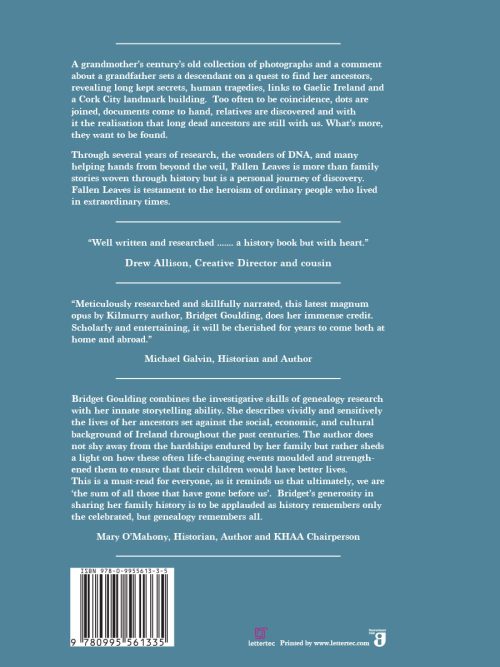

Bridget Goulding
A grandmother’s century’s old collection of photographs and a comment about a grandfather sets a descendant on a quest to find her ancestors, revealing long kept secrets and human tragedies. Through several years of research, the wonders of DNA, and many helping hands from beyond the veil, Fallen Leaves is more than family stories woven through history but is a personal journey of discovery. Bridget Goulding served for several years with the Kilmurry Historical and Archaeological Association during the building of the Independence Museum Kilmurry. Each edition of Fallen Leaves is signed by the author.






